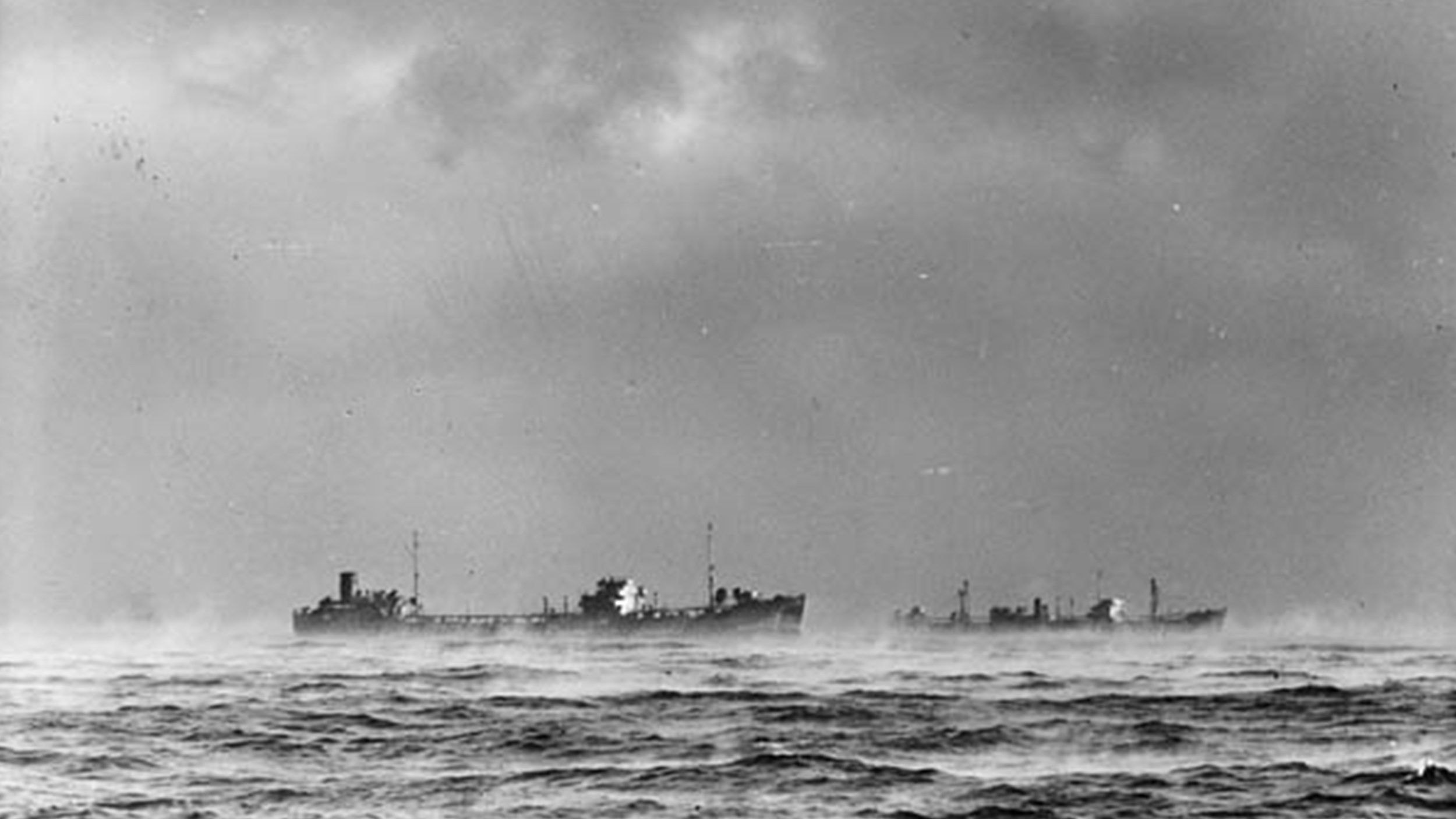In June 1947, the American vessel Silver Star pulled alongside the strangely silent Dutch merchant ship Ourang Medan. Nothing moved aboard the Dutch ship, and hails went unanswered. All was quiet. Not even the ship’s dog barked.
Hours earlier, the Silver Star and other vessels cruising the Indonesian Straits of Malacca had picked up an unsettling Morse code message.
“S.O.S. from Ourang Medan * * * We float. All officers including the captain, dead in chartroom and on the bridge. Probably whole of crew dead * * *.”
The message then dissolved into random dots and dashes. The Silver Star’s radio operator was doubtless just pushing back his chair to deliver the disturbing message to his captain when a final transmission came through.
“I die.”
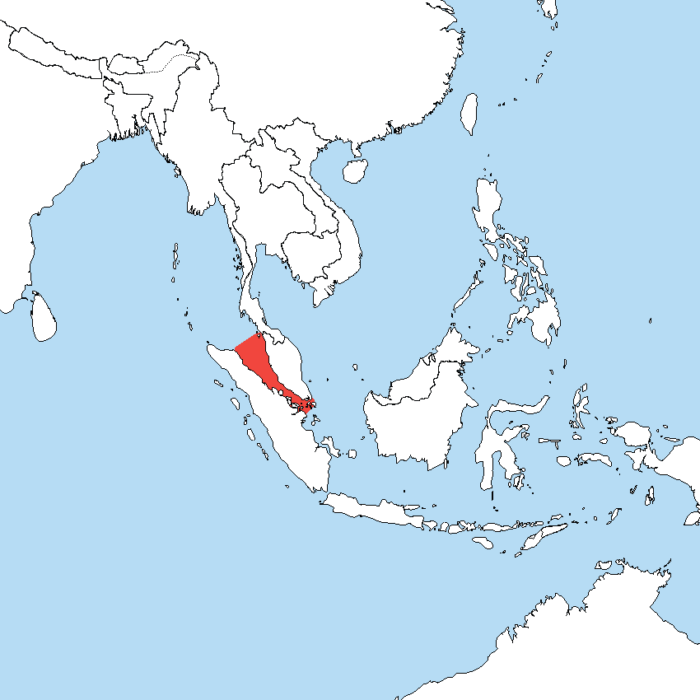
Straits of Malacca, shown in red. Map: Wikimedia Commons
After triangulating the message’s likely point of origin, the captains that received the transmission determined that the Silver Star was the vessel closest to the Ourang Medan. And so it fell upon this unlucky crew to bear witness to the horror aboard the stricken ship.
Even the ship’s dog was dead
Boarding the Ourang Medan, the men of the Silver Star discovered cabin after cabin of dead bodies. The corpses were flat on their backs, eyes and mouths open, faces frozen. It looked to the living men exploring the ship as if the crew of the Ourang Medan had died of fright. Even the ship’s dog was dead.
The ship itself was undamaged, the cargo untouched.
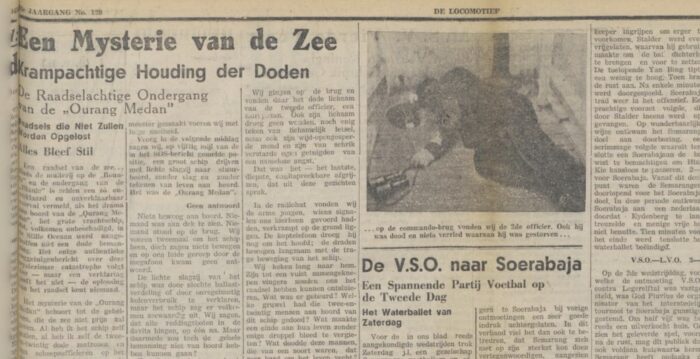
A clipping from the Dutch-Indonesian newspaper that first reported the story. Photo: Screenshot
Presumably determining that this kind of thing was well above their pay grade, the captain and crew of the Silver Star set about towing the Ourang Medan into a nearby port. But before they arrived, another strange occurrence — the ghost ship caught fire.
Originating in the Ourang Medan’s cargo hold, the fire spread quickly. The members of the Silver Star manning the Ourang Medan during the towing procedure scampered for the safety of their ship, then watched helplessly (but perhaps not without relief) as the Ourang Medan slipped beneath the waves.
Or so the story goes.
Ghost ships
The account of the Ourang Medan is the stuff of classic ghost ship tales. From the time that humanity first took to the seas, sailors have stumbled upon stricken vessels full of dead bodies or missing their crews entirely.
The most famous such account is likely that of the Mary Celeste — a merchant vessel found floating in the Atlantic in 1872. Mary Celeste’s captain, crew, and passengers (the captain’s wife and child) were missing, but the ship was undamaged and the cargo again untouched. It’s been called “the sea’s greatest mystery,” but plenty of similar examples abound.
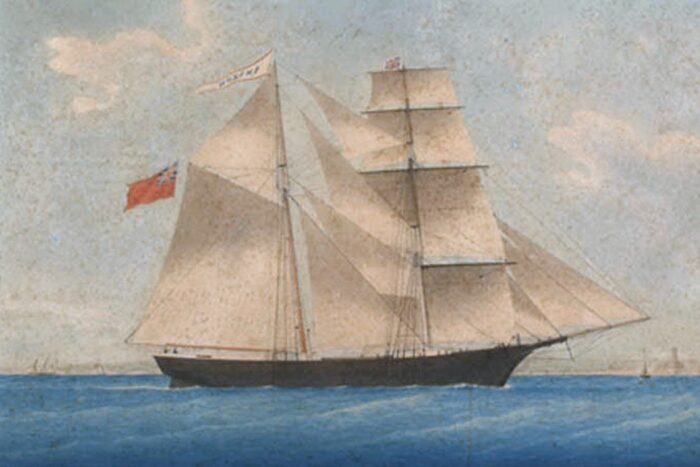
A painting of the Mary Celeste. Photo: Wikimedia Commons
The story of the Mary Celeste is well-documented, and the fact that the crew was missing makes it a standout example of the type. More often, though, sailors throughout history were likely to come across ships where the entire crew was dead of scurvy, dehydration, or disease. This is particularly the case during the late Middle Ages and early Renaissance when successive waves of plague ravaged Asia and Europe.
Certain strains of the plague could kill you in 24 hours, and those strains could also be passed from human to human. But ocean travel during that age was a slow and arduous process, and rats aboard ships were common. Even the bubonic form of the plague, which killed more slowly and was carried by rat fleas, could wipe out an entire crew during a long voyage.
Possible explanations
Ghost ships are less common in the modern age, where vessels move more quickly and effective communication technology is standard.
Its relative modernity is one of the factors that makes the tale of the Ourang Medan so fascinating. When you add the cryptic SOS message, the dead crew, the detail about the dog, and the fear-struck faces of the corpses, it has all the hallmarks of a classic maritime ghost story.
Setting aside a supernatural explanation (as much fun as that is), what could have caused the deaths on the Ourang Medan and the fire that sank it? Armchair investigators have proposed at least two plausible theories over the last half-century.
The first is that as various wars ravaged the globe, the Ourang Medan was secretly carrying nerve gas or some other form of chemical weapon. Somehow, the weapon was released on board and later ignited in the cargo hold.
The second is that a problem with the ship’s boiler caused a deadly buildup of carbon monoxide, killing the crew. The same problem, whatever it was, later caused the ship to explode.
There’s just one issue with both of these theories.
The entire story of the Ourang Medan, from start to finish, probably never happened.
‘The entire story is a fantasy’
Various accounts of the Ourang Medan were published widely in reputable British newspapers throughout the late 1940s and early 1950s, including the Yorkshire Evening Press, the Daily Mirror, and the Associated Press. The U.S. Coast Guard even got in on the act, publishing a short account of the tale in the 1952 edition of its journal, Proceedings of the Merchant Marine Council.
But a little historical detective work quickly turns up significant problems. While the British accounts were the most widely read, it appears that the story originated with a series of three articles in a Dutch-Indonesian newspaper. Those stories vary widely from the British reporting in key details, including the Ourang Medan‘s location when it was found, the ship’s point of origin and destination, details about its cargo, the nature of the SOS message, and precisely when the ship caught fire during the rescue. The Silver Star was not named in the account.
The reporter responsible for the story, an Italian named Silvio Scherli, also claimed that the Ourang Medan had one survivor. In Scherli’s account, the unnamed German survivor somehow encountered a missionary to whom he told his horrific tale before dying. The missionary then passed the story on to Scherli.
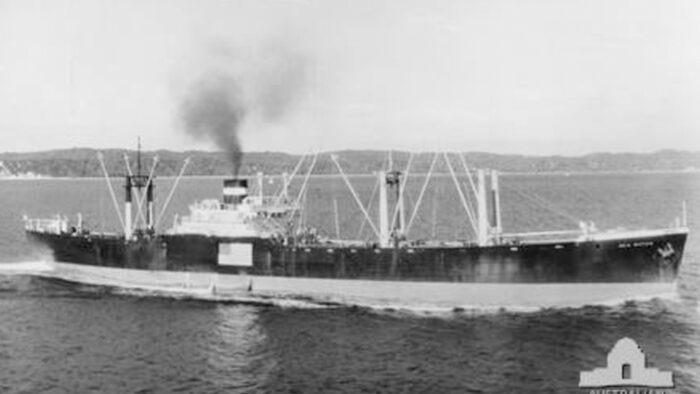
According to one version of the story, an American cargo vessel much like this one responded to the Ourang Medan’s distress call.
That’s a pretty sketchy provenance, prompting the editors of the Dutch-Indonesian newspaper to include the following note in the third part of the story:
“This is the last part of our story about the mystery of the Ourang Medan. We must repeat that we don’t have any other data on this ‘mystery of the sea.’ Nor can we answer the many unanswered questions in the story. It may seem obvious that the entire story is a fantasy, a thrilling romance of the sea. On the other hand, the author, Silvio Scherli, assures us of the authenticity of the story.”
Not entirely convincing.
Missing documents
The final nail in the coffin comes from historical documents or rather the lack thereof. Generations of maritime detectives have failed to find any evidence that a ship called the Ourang Medan ever existed in the Netherlands or any other country. While the Silver Star did exist, its ship’s logs don’t record a distress call, a rescue attempt, or a fire.
The tale’s Fortean proponents, particularly those inclined to believe in a supernatural angle or the chemical weapon theory, would likely say the whole affair was hushed up, the historical documents scrubbed. It’s not outside the realm of possibility, but it seems unlikely.
None of that keeps the Ourang Medan from popping up in media across television shows, novels, and even video games. It’s simply too good of a story not to become lodged in the public imagination, as its rapid spread across the newspaper world in the 1940s shows.
Still, it makes for a good yarn in the spooky season. And as much as it is the duty of any sailor to respond to a distress call, I can tell you this — should I happen to find myself at sea and in receipt of a message containing the words “we float” and “I die,” I’d certainly think twice before turning the tiller.
